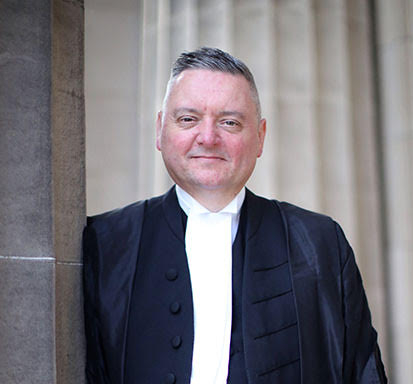Thomas Ross QC: The Alice Sebold case – could it happen in Scotland?

Thomas Ross QC
It was reported this week that Alice Sebold, author of the Lovely Bones amongst other works, had issued a public apology for her part in a miscarriage of justice that led to Anthony Broadwater spending 17 years in prison for a crime that he did not commit. But could this miscarriage of justice have happened in Scotland?
In June 1981 Alice Sebold, then a student, was dragged into a tunnel from a public park and raped by a black male in Syracuse, New York. Five months after the rape, while walking down the street she was approached by a young black male who asked: “Hey girl, don’t I know you from somewhere?” She believed this to be the rapist and reported the encounter to the police. A policeman, who had been nearby at the time and had spoken to the man identified him as 20-year-old Anthony Broadwater. Mr Broadwater was arrested and on 4th November 1981, formed part of a five-man identification parade at the local police station. Alice Sebold viewed the five men through a pane of glass and identified number four. Anthony Broadwater stood at position number five.
It appears that a sample of Mr Broadwater’s pubic hair was taken and an expert (later discredited) claimed a match with a hair found upon Mr Sebold at the time of the attack.
When the case came to trial, Ms Sebold made a dock identification of Mr Broadwater, who was convicted and sentenced to 16 years’ imprisonment.
Despite many attempts to overturn the conviction, Mr Broadwater served his sentence until his release in 1999. By 2021 the fake science behind the pubic hair evidence had been discredited and, finally, his conviction was quashed.
Much surprise has been expressed that the case proceeded at all when Ms Sebold had selected an individual other than Mr Broadwater at the identification parade.
So could this happen in Scotland?
In McNally [2012] HCJAC 156 M was charged with assault and the Crown case depended upon his being identified by X (the complainer) and his partner (G). At an identification parade, X made no identification but stated that a stand-in was “most like” her assailant. G made no identification, but stated that M “looked similar to” the assailant. Both subsequently made ‘dock identifications’ of M who was convicted. In delivering the opinion of the appeal court (refusing the appeal) Lord Clarke stated that “to be borne in mind are the particular and obvious dangers involved in dock identification, which were fully recognised in HOLLAND … where his Lordship gave guidelines as to safeguards which should be put in place to minimise, if not eliminate, those dangers. But none of that amounts to saying that in a case like the present, where there was eye witness identification of (M) by the witnesses and failures on other occasions … by the same witnesses to identify (M), that periled a conviction…”
In Docherty [2014] HCJAC 71 D was charged on indictment with assault and robbery in a shop. The complainer identified D from a photoboard containing photographs of 12 people. As the Lord Advocate’s Guidelines on the Conduct of Visual Identification Procedures (February 2007) required, the complainer was invited to attend an identification parade, at which she identified a stand-in. A pre-trial objection to the leading of a dock identification was repelled, the complainer identified D in court and a conviction followed. In delivering the opinion of the court (refusing the appeal) the Lord Justice General (Gill) stated that “a dock identification is not inadmissible per se … and is not necessarily made inadmissible by the fact that the witness has not made a previous identification … or … HAS IDENTIFIED A DIFFERENT PERSON ON A PREVIOUS OCCASION”.
All jurisdictions can learn lessons from this terrible miscarriage of justice but perhaps some good will come from it in this jurisdiction; Anthony Broadwater had elected not to have a jury trial and was tried by Judge Walter T Gorman alone. In the last year the Scottish government put forward a bill proposing the ‘temporary’ abolition of trial by jury. The weight of opposition in Scotland was such that the proposal was withdrawn within 24 hours, but it has since been mooted by the Lord Justice Clerk in a paper proposing changes in the way sex crimes are tried and very recently by Scotland’s Chief Prosecutor in the Scottish Parliament.
Would Anthony Broadwater have been prosecuted in Scotland? No doubt.
Would he have been convicted – well Mr McNally and Mr Docherty were – despite the many ‘safeguards’ that Scots lawyers often proudly claim to have?
This article first appeared on the Scottish Criminal Law Blog









